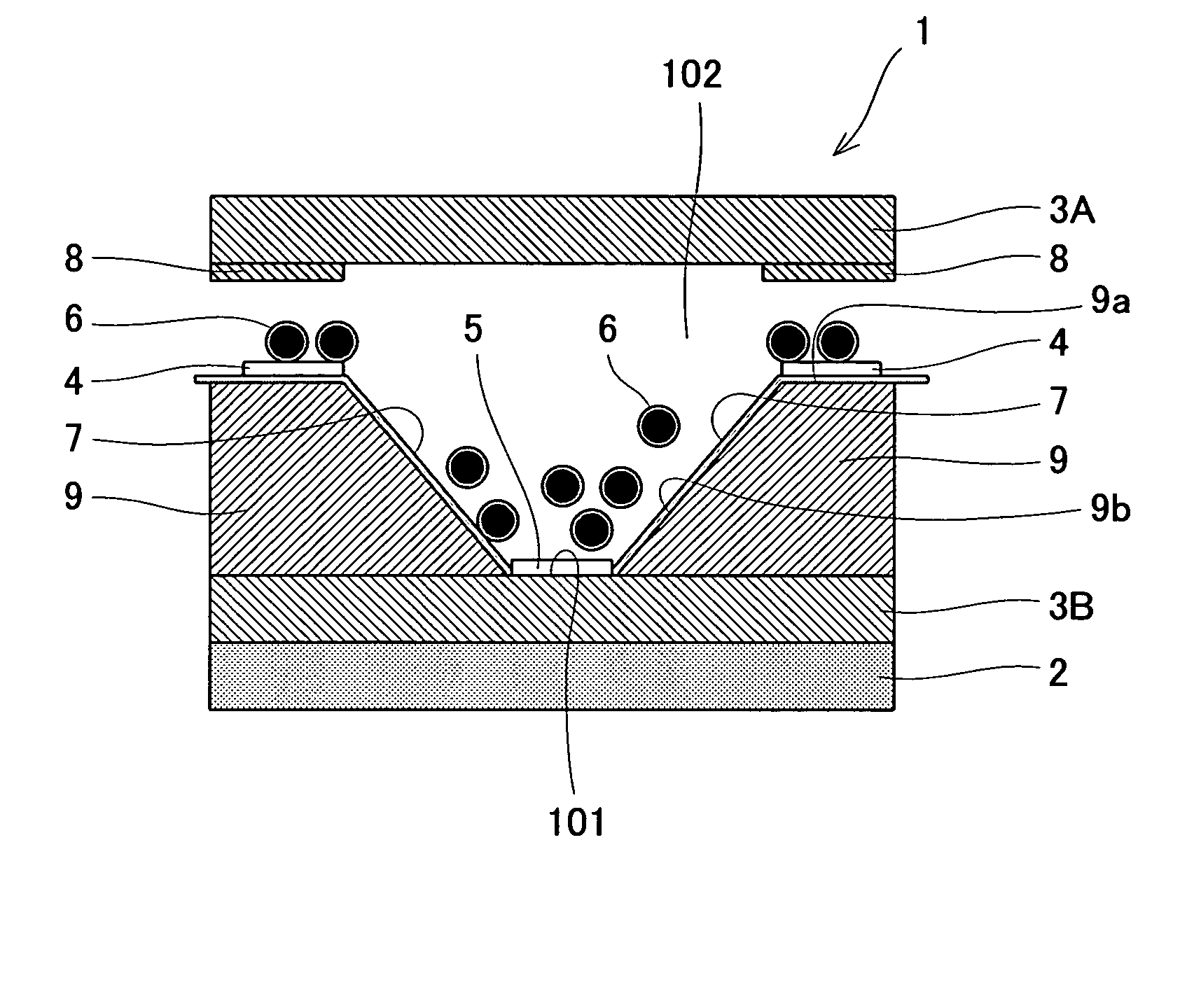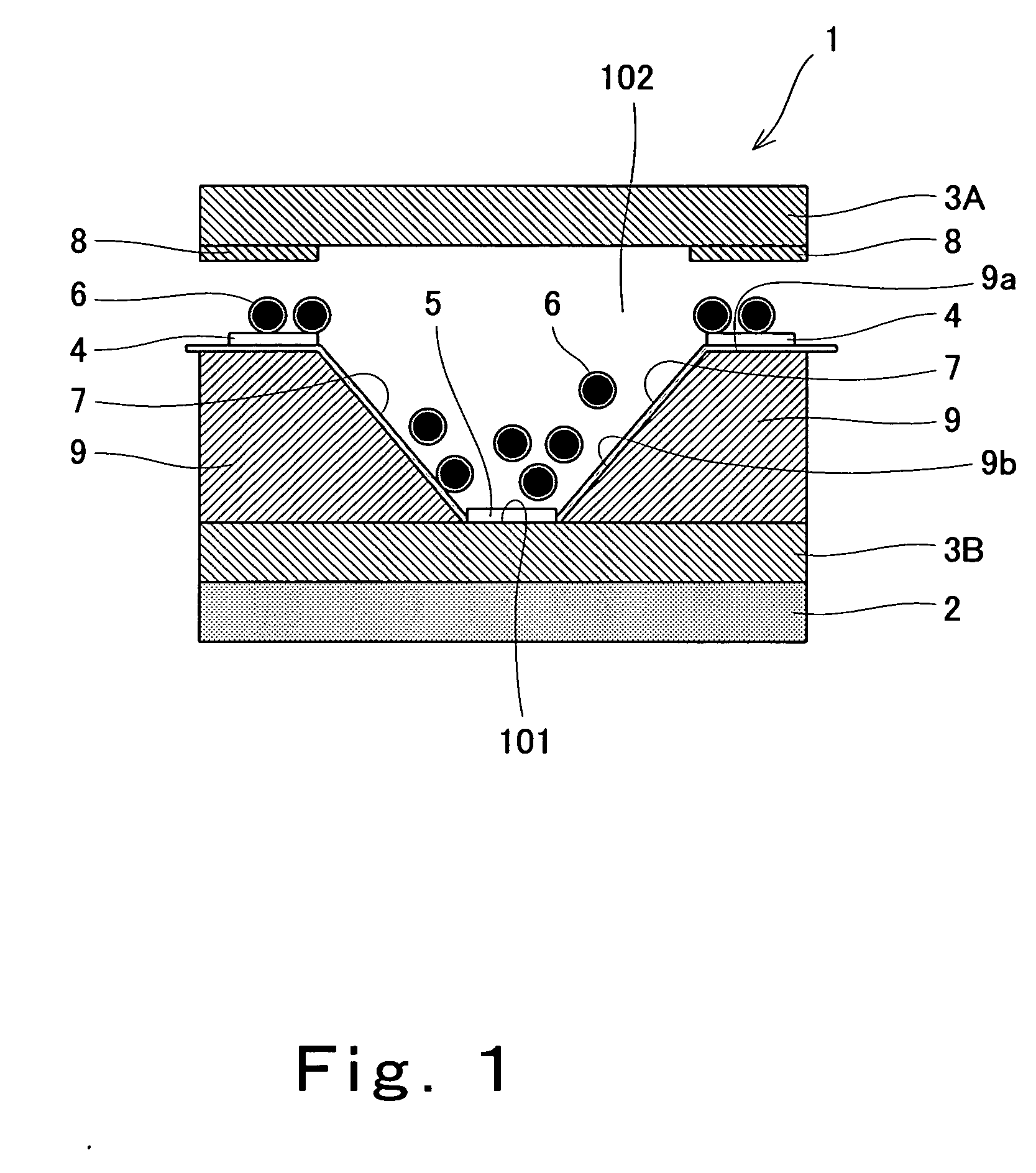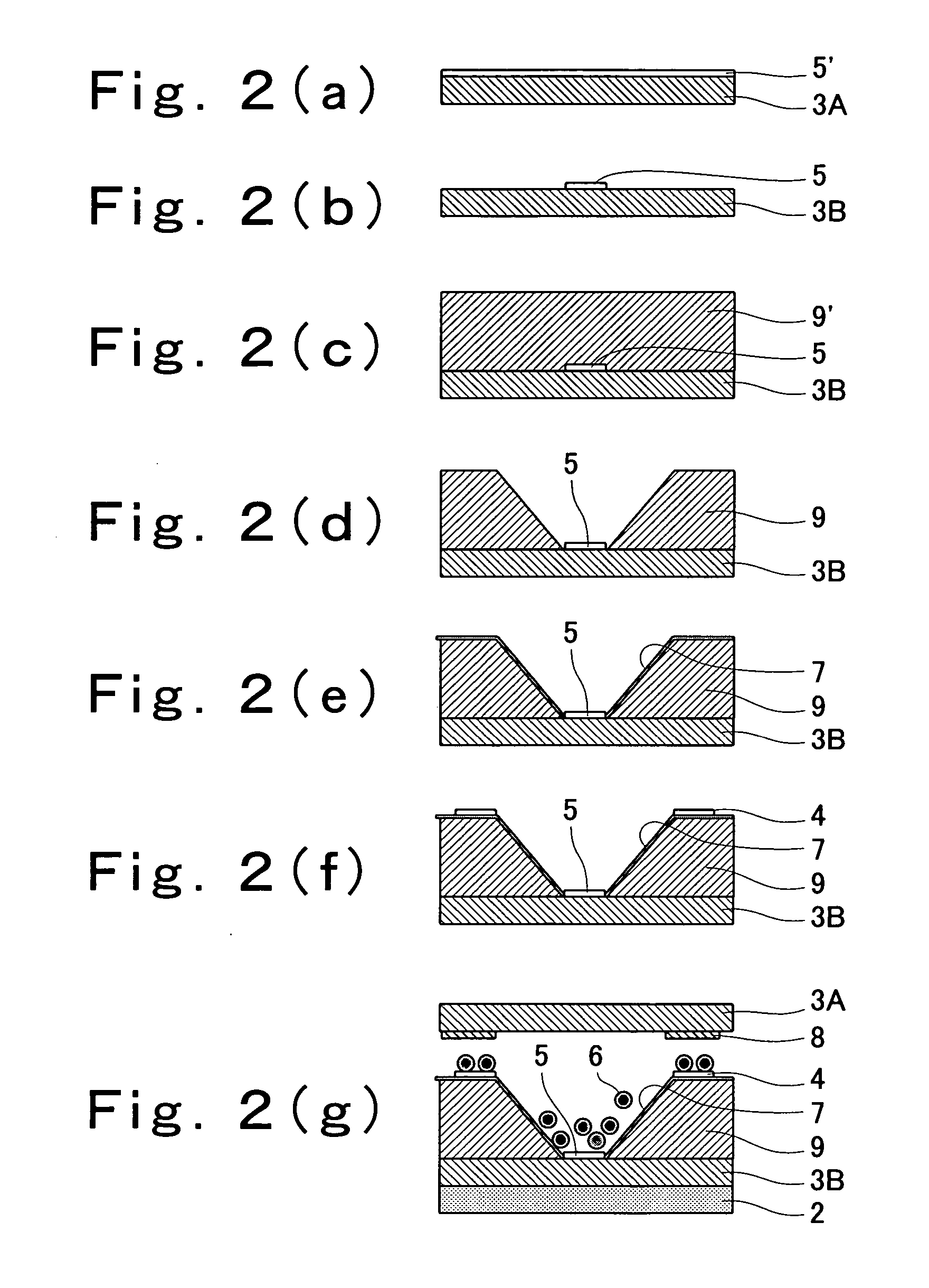Display and method for driving same
a technology of display device and display method, applied in static indicating device, non-linear optics, instruments, etc., can solve the problems of slow response of image display, significantly degraded visibility, and reduced visibility, and achieve satisfactory display quality and visibility.
- Summary
- Abstract
- Description
- Claims
- Application Information
AI Technical Summary
Benefits of technology
Problems solved by technology
Method used
Image
Examples
embodiment 1
[0052]FIG. 1 is a sectional view schematically showing the construction of a display device according to embodiment 1 of the present invention; and FIGS. 2(a) to 2(g) are sectional views schematically illustrating process steps included in a fabrication method of the display device according to embodiment 1 of the present invention.
[0053] The display device according to the present embodiment has one pixel. A display device having plural pixels will be described later in the description of embodiment 4.
[0054] As shown in FIG. 1, display device 1 according to the present embodiment includes a transparent front substrate 3A and a transparent rear substrate 3B, which are positioned to face each other. The transparent substrates 3A and 3B each comprise a transparent resin substrate for example. The transparent rear substrate 3B has an inwardly oriented surface formed with a pair of uneven members 9,9. In this embodiment, each uneven member 9 is formed to have a trapezoidal section wit...
embodiment 2
[0066] Monochromatic display (black and white display for example) has been described in Embodiment 1. In Embodiment 2, description is made of the case where color display is realized by the use of the display device according to embodiment 1.
[0067]FIG. 5 is a sectional view schematically showing the construction of a display device according to embodiment 2 of the present invention.
[0068] As shown in FIG. 5, the display device 1 according to the present embodiment has backlight 2 operative to emit white light as a light source, transparent front substrate 3A and transparent rear substrate 3B, light blocking electrode 4, transparent electrode 5, electrostatically chargeable fine particles 6, reflective film 7, light blocking members 8, and uneven members 9. On the surface of the transparent electrode 5 is provided a red color filter 10 having a predetermined thickness and substantially the same shape as the transparent electrode 5. Other features are in common with the correspondi...
embodiment 3
[0081]FIG. 8 is a block diagram showing the configuration of a display device according to embodiment 3 of the present invention.
[0082] As shown in FIG. 8, the display device 100 according to embodiment 3 includes a display section 28 having sub-pixels 29 arranged in matrix. Each of the sub-pixels 29 constituting the display section 28 has first and second electrodes, as will be described later. The first and second electrodes are connected to first and second electrode drivers 26 and 27, respectively. That is, each sub-pixel 29 is driven by the first and second electrode drivers 26 and 27. The operations of the respective first and second electrode drivers 26 and 27 are controlled by a control section 25 in accordance with video signals inputted to the control section 25. Thus, the display device 100 according to this embodiment comprises the control section 25, first and second electrode drivers 26 and 27, and display section 28 comprising the sub-pixels 29.
[0083] The following ...
PUM
| Property | Measurement | Unit |
|---|---|---|
| response time | aaaaa | aaaaa |
| particle diameter | aaaaa | aaaaa |
| thickness | aaaaa | aaaaa |
Abstract
Description
Claims
Application Information
 Login to View More
Login to View More - R&D
- Intellectual Property
- Life Sciences
- Materials
- Tech Scout
- Unparalleled Data Quality
- Higher Quality Content
- 60% Fewer Hallucinations
Browse by: Latest US Patents, China's latest patents, Technical Efficacy Thesaurus, Application Domain, Technology Topic, Popular Technical Reports.
© 2025 PatSnap. All rights reserved.Legal|Privacy policy|Modern Slavery Act Transparency Statement|Sitemap|About US| Contact US: help@patsnap.com



